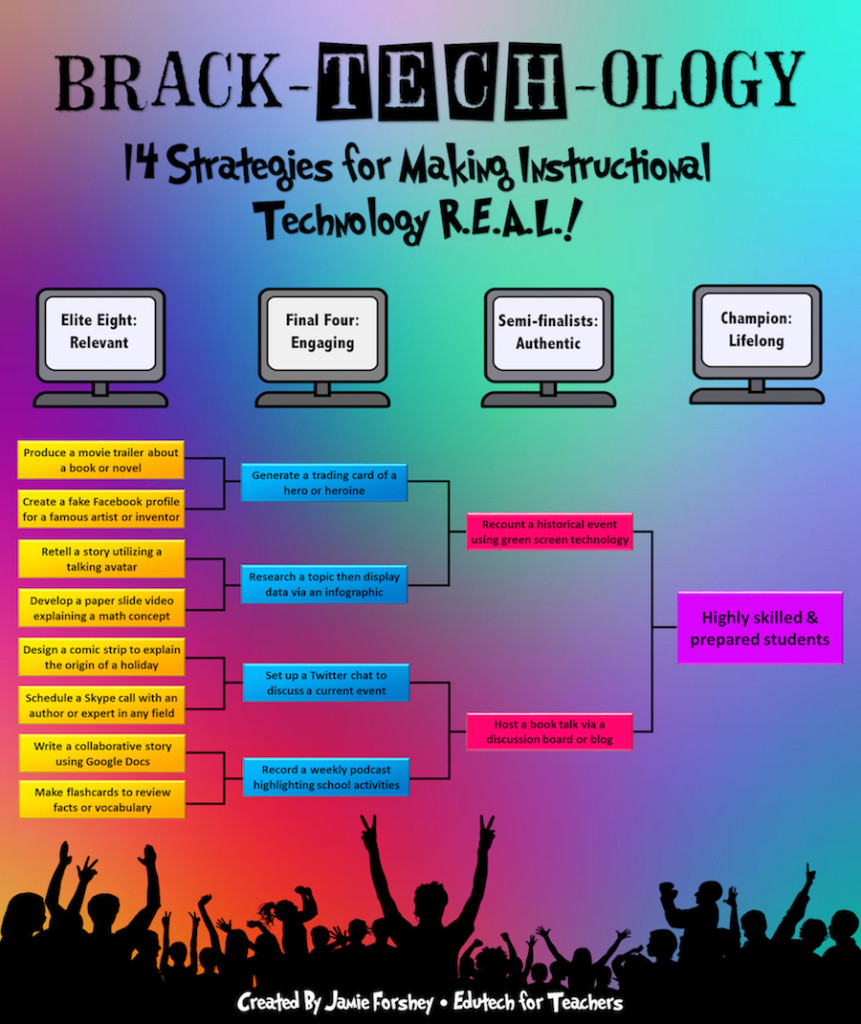March Madness Technology Challenge!
- March 24, 2016
- By Jamie Forshey
How in the world are basketball and education even remotely related, you ask? Well, for some teachers, determining how to best integrate technology into a lesson can be as overwhelming as picking a winner of the NCAA Basketball Tournament. Just like there’s a science to determining the odds of a #16 seed knocking off the #1 pick, there’s an equally logical rationale behind deciding what type of technology will most effectively impact the learning process.

The Great Tool Debate
With a myriad of web tools and apps available to teachers, it’s sometimes mind-boggling trying to identify which are the most effective for classroom usage. With educational resources spanning from audio recordings to collages, comics, posters, digital books, narrated slideshows, movies, animations and screen casts, there’s never a shortage when it comes to innovative ways to showcase student knowledge and skills. Seriously, if you can imagine creating it–whatever “it” might be, there’s… Yep, you guessed it! An app for that! Actually, there’s most likely two or three or nine of them…at least! So, the burning questions become which one should a teacher choose? And most importantly, why?
The End Game
If the game plan is to integrate technology for the sake of doing so, as opposed to infusing devices and tools to create meaningful learning experiences that are connected to real-world experiences, then expect an upset in the opening round. Instead, the quest for a championship should focus on pedagogy and strategy, not the tool.
That said, there’s no official selection committee in the ed tech world; however, much like the job of an NCAA representative, the teacher’s role is to ensure the learning resource meets a certain set of criteria. The content, design, and testimonials are all important to consider, but only after the purpose of the integration has been clearly determined. Always ask yourself, what do I want to accomplish and why? Does the learning outcome support the curriculum? And in the end, will the students come away with something “real” that will teach them a new skill or knowledge that will stick?
By carefully reflecting upon these questions, teachers can ensure that technology is not the main event, but instead just part of the process that enhances the curriculum. This way of thinking and planning will lead to students acquiring the modern-day information literacy skills that are necessary to compete in a high-tech global marketplace.
Tech-knowledge-y Matters!
Representing the schools of creativity, critical thinking, collaboration and communication, here are 14 slam dunks for incorporating a digital spin to teaching and learning. One of these buzzer beaters from the ed tech playbook are sure to make the highlight film!
 During your next science or social studies lesson, challenge your students to one of the Relevant Elite Eight activities in orange. Then see who moves through the ranks to become a lifelong champion of your unit! You’ll be surprised at the real-life tech skills they’ll pick up while engaging with your learning goals.
During your next science or social studies lesson, challenge your students to one of the Relevant Elite Eight activities in orange. Then see who moves through the ranks to become a lifelong champion of your unit! You’ll be surprised at the real-life tech skills they’ll pick up while engaging with your learning goals.

Kids Discover Talks with Television Lighting Designer Christopher Landy About the Rockefeller Center Christmas Tree Lighting
- December 9, 2025

It’s the Most Wonderful Time of the Year… For Community Service Projects!
- December 8, 2025

The Rockefeller Center Christmas Tree Lights the 2025 Holiday Season in New York City
- December 3, 2025